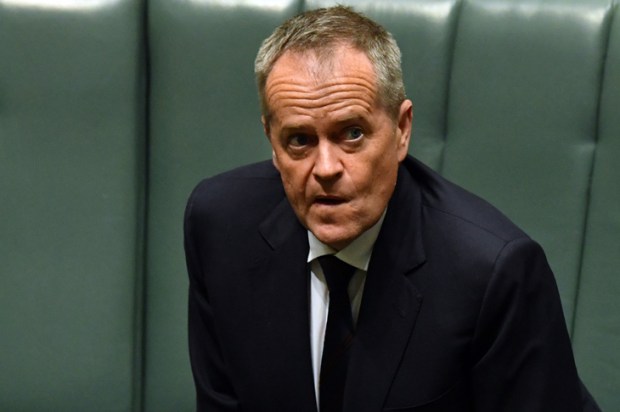To paraphrase the lyrics of Billy Joel: modesty, is such a lonely word; everyone is so untrue.
Recently releasing the draft legislation to double the tax rate on higher-balance superannuation accounts, Treasurer Jim Chalmers described the change as a ‘modest adjustment… (that) will affect only a handful of people’. This is far from the case and unfortunately, this change will have significant implications and is far from ‘modest’.
In legislating to double the tax rate on superannuants with a balance greater than $3 million, the government has been at pains to emphasise that this change would affect only affect 0.5 per cent of people with super. This will not be the case. The cost of complying with this tax change will impact all superannuation funds and accounts (industry, retail and self-managed) and consequentially all superannuants irrespective of their account balance.
That loud noise heard when Treasurer Jim Chalmers originally announced this proposal was not the sound of jaws dropping but rather the sound of champagne corks popping in the offices of accountants, lawyers, consultants and service providers who will be tasked with implementing this change. To effect the necessary changes, the Australian Taxation Office, Apra and superannuation funds will need to develop new systems, technologies, policies and processes, and they will need to engage armies of advisors and consultants at great expense.
A key virtue of a flat 15-per-cent superannuation tax rate is its administrative simplicity. To implement a second tax rate tier based not on income but instead on wealth (in superannuation) will result in significant and costly changes to the way all superannuation is administered and taxed. This includes increasingly frequent asset revaluations, identifying superannuants with multiple accounts across funds, and changed liquidity management strategies to ensure sufficient funds are available to meet tax liabilities. (As an aside, if there is to be a discussion on productivity-enhancing tax reform, consideration should be also given to implementing a flat income tax rate.)
Despite claims to the contrary, it is not just the large-balance self-managed superannuation funds who will feel the costly administrative sting. Even the largest industry super funds will need to develop systems to satisfy themselves that this regulatory risk is effectively managed, just in case a single member has a high balance or potentially a high balance across multiple accounts. Despite the Treasurer’s claims, all superannuants, large- and small-balance, will pay in some way to implement and support this change. And these costs will constantly compound to eat away at retirement resources.
Treasury has estimated that some $30 billion of fees were extracted from superannuants in 2020 alone. When Australia’s superannuation system is described as the envy of the world, perhaps this is because it is envied by the card-carrying members of the International Association of Ticket Clippers who covet the rivers of administration fee gold that flow from it. Yet while government frequently highlights the high cost of administering superannuation, it conveniently ignores the administrative costs it imposes through burdensome and constantly changing regulation.
Constant regulatory changes only increase administration cost and complexity, and unfortunately, in the halls of government, the direct and indirect costs of regulation and regulatory changes are seldom considered. Regulation imposes two significant but under-appreciated costs. The first is the direct cost of implementing and complying with regulation, including the cost of regulators and compliance officials. The second is the productivity loss when ever more resources are transferred from production into government and quasi-government activity. This does not mean there should be zero regulation, but until the total costs of regulation are traded off against the benefits of regulation, economic and productivity damage will continue.
When the US government was implementing the Foreign Account Tax Compliance Act (Fatca), the claimed purpose was to ‘better combat cross-border tax avoidance’ and it was expected to generate an additional US$8.5 billion of tax over ten years. The Swiss-American Chamber of Commerce, however, estimated that the global cost to implement Fatca, including for Australian banks, would be well in excess of US$500 billion with ongoing annual costs of US$10-30 billion. This sadly did not stop the US government imposing compliance costs on banks, and ultimately bank customers, including Australians.
Earlier this year, following the release of his Monthly essay, Treasurer Chalmers said, ‘If I had a little more room, I could have done more on competition because I do believe that competition is a progressive force in our economy’. On the virtues of competition, Chalmers is of course correct.
Treasury and the Productivity Commission have commented that a lack of competition contributes to higher administration fees. But it is government policy, implemented through Apra, to reduce competition and create an oligopolistic industry structure by forcing superannuation funds to merge so to create a system with just a few mega-funds. Fund mergers have significant transaction costs themselves and are borne by superannuants.
It is also unclear whether forced fund mergers will deliver better returns to superannuants, but it will undoubtedly simplify the lives of Apra officials.
There is also a regulatory interplay between Asic and Apra. For example, Asic through its regulatory guide, defines performance fees as an administrative cost. That means that if a superannuation fund makes a well-judged and risk-managed investment that outperforms, then Apra uses the higher performance fee to bludgeon the fund trustee for having too high costs. This despite the net investment return being strong. Such adverse regulatory outcomes reduce accountability and incentivise performance mediocrity.
When it comes to financing retirement, the essential objective is to optimise a retiree’s purchasing power when they cease working. This is a function of the pension safety net and the amount of (compulsory and voluntary) savings, but also, the net investment return on savings. The cost of regulation and compliance is just another tax which reduces investment returns, a tax on all superannuants and not just high balance ones.
If the government were genuinely concerned about optimising the retirement savings and the general economic welfare of all Australians, it would give serious consideration to undertaking a broad program of regulatory reform to address costs it imposes. After all, a dignified retirement is owed to all Australians and not just the members of the administration and regulation industrial complex.
Got something to add? Join the discussion and comment below.
Get 10 issues for just $10
Subscribe to The Spectator Australia today for the next 10 magazine issues, plus full online access, for just $10.
You might disagree with half of it, but you’ll enjoy reading all of it. Try your first month for free, then just $2 a week for the remainder of your first year.














Comments
Don't miss out
Join the conversation with other Spectator Australia readers. Subscribe to leave a comment.
SUBSCRIBEAlready a subscriber? Log in